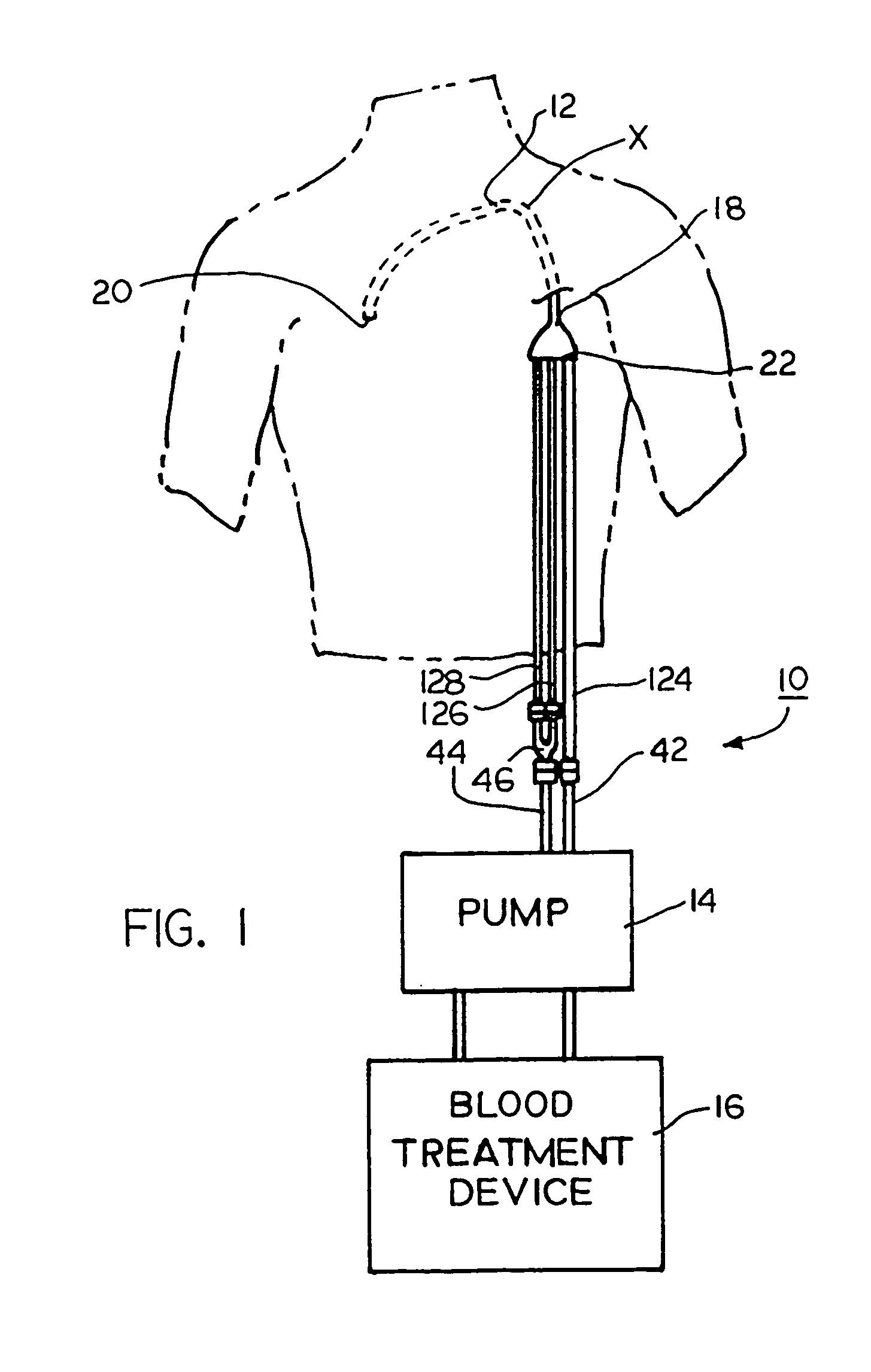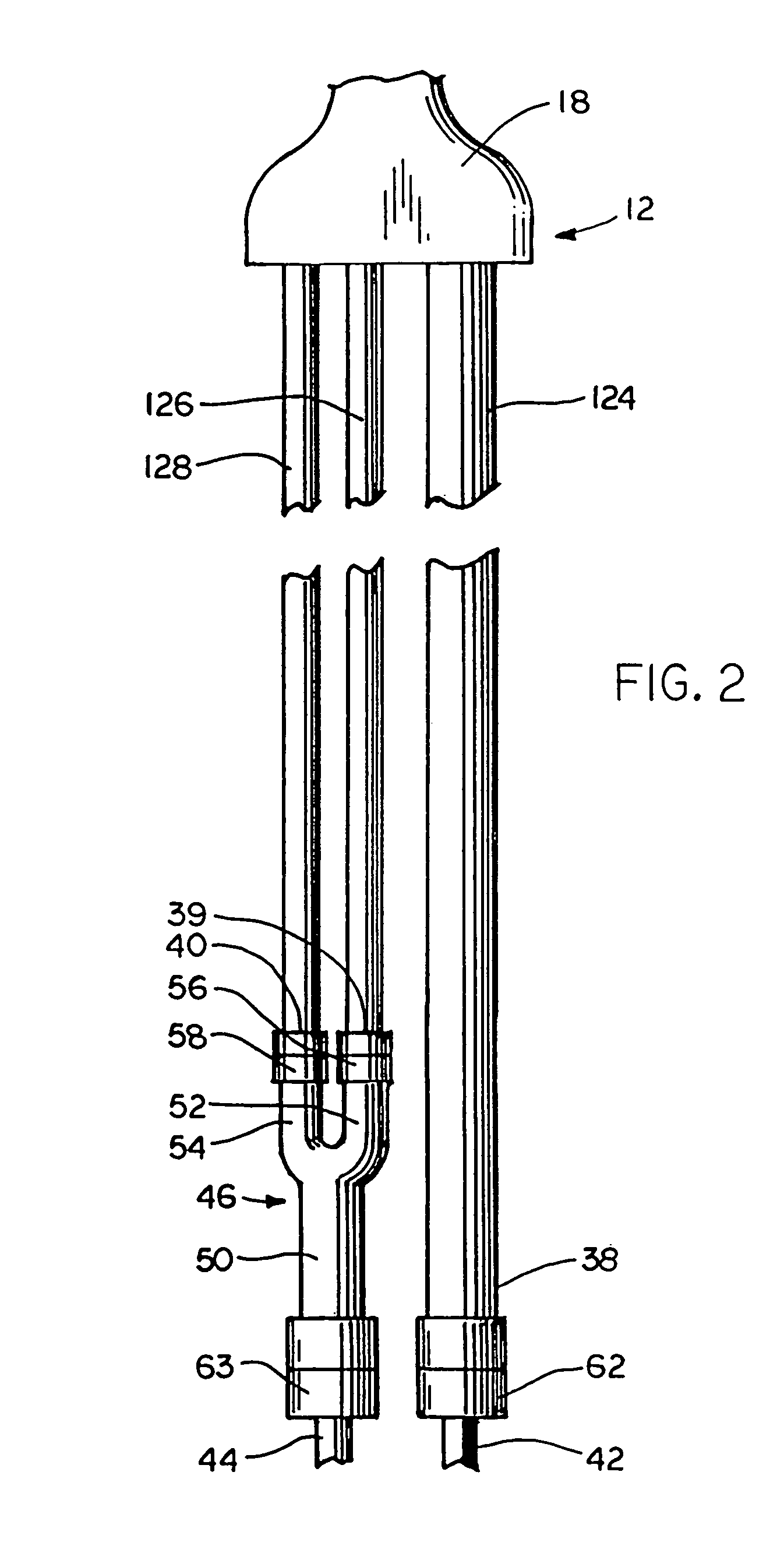Multi-lumen catheter system used in a blood treatment process
a multi-lumen catheter and blood treatment technology, applied in the direction of multi-lumen catheters, catheters, other medical devices, etc., can solve the problems of dual-lumen catheters still susceptible to collapse, inefficient delivery of one therapy phase, and increased surgical procedures for patients, so as to reduce the disturbance of two-way flow and mixing, and the effect of precise cutting of the catheter
- Summary
- Abstract
- Description
- Claims
- Application Information
AI Technical Summary
Benefits of technology
Problems solved by technology
Method used
Image
Examples
Embodiment Construction
[0025]Referring to the drawings, the triple-lumen catheter system of the present invention is indicated generally by the numeral 10. Multi-lumen catheter system 10 is designed to permit the simultaneous withdrawal and return of equal amounts of blood to a patient at high flow rates. The high blood flow rates sustainable by catheter system 10 permit catheter system 10 to be effectively used for blood treatments such as apheresis including stem cell harvest and also permit its' use as a multi-purpose catheter such as for BMT purposes.
[0026]As shown in FIG. 1, catheter system 10 includes a multi-lumen catheter 12 and coupling device 46. Multi-lumen catheter 12 is insertable by conventional means into the circulatory system of a patient and pump 14 acts to simultaneously withdraw and return blood to the patient. Coupled to pump 14 is blood treatment device 16 which treats blood withdrawn from a patient. As pump 14, blood treatment device 16, and the connecting tubing 44 and 42 are conve...
PUM
 Login to View More
Login to View More Abstract
Description
Claims
Application Information
 Login to View More
Login to View More - R&D
- Intellectual Property
- Life Sciences
- Materials
- Tech Scout
- Unparalleled Data Quality
- Higher Quality Content
- 60% Fewer Hallucinations
Browse by: Latest US Patents, China's latest patents, Technical Efficacy Thesaurus, Application Domain, Technology Topic, Popular Technical Reports.
© 2025 PatSnap. All rights reserved.Legal|Privacy policy|Modern Slavery Act Transparency Statement|Sitemap|About US| Contact US: help@patsnap.com



